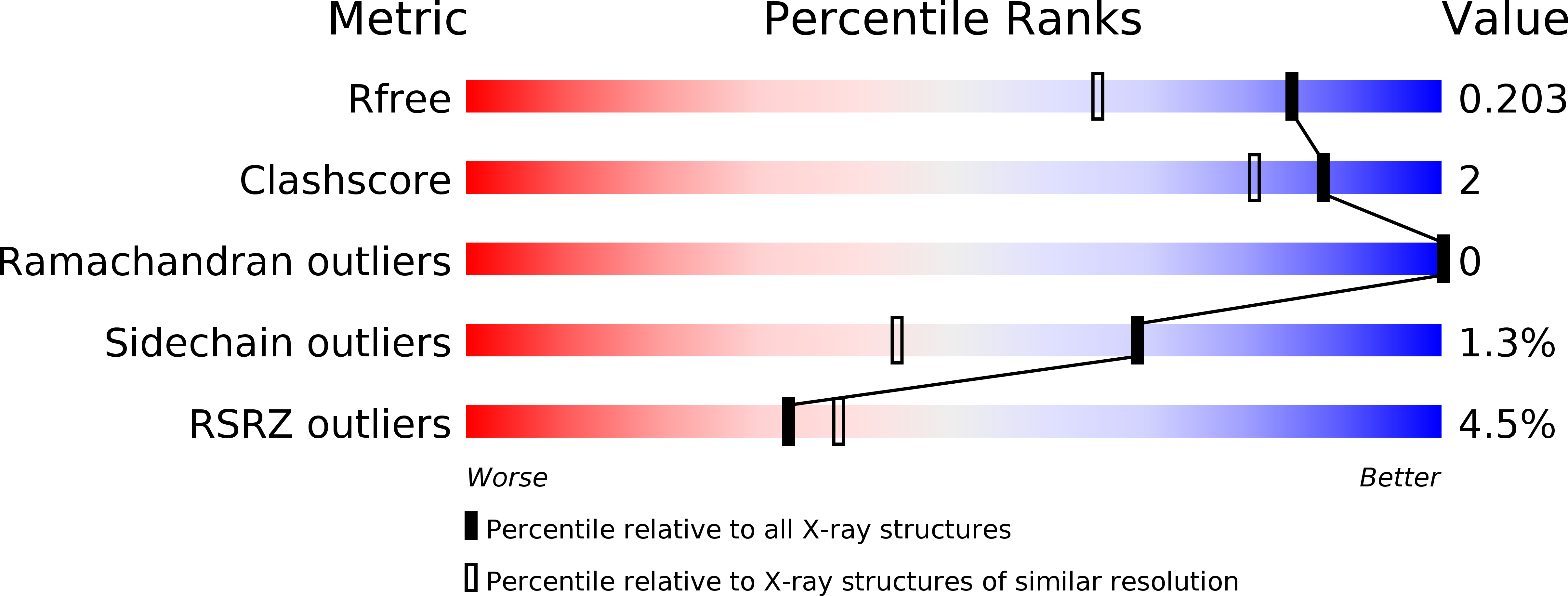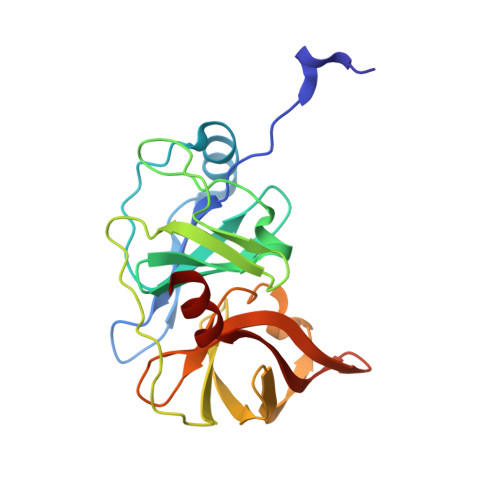The Molecular Basis of Drug Resistance against Hepatitis C Virus NS3/4A Protease Inhibitors.
Romano, K.P., Ali, A., Aydin, C., Soumana, D., Ozen, A., Deveau, L.M., Silver, C., Cao, H., Newton, A., Petropoulos, C.J., Huang, W., Schiffer, C.A.(2012) PLoS Pathog 8: e1002832-e1002832
- PubMed: 22910833
- DOI: https://doi.org/10.1371/journal.ppat.1002832
- Primary Citation of Related Structures:
3SU0, 3SU1, 3SU2, 3SU3, 3SU4, 3SU5, 3SU6, 3SUD, 3SUE, 3SUF, 3SUG, 3SV6, 3SV7, 3SV8, 3SV9 - PubMed Abstract:
Hepatitis C virus (HCV) infects over 170 million people worldwide and is the leading cause of chronic liver diseases, including cirrhosis, liver failure, and liver cancer. Available antiviral therapies cause severe side effects and are effective only for a subset of patients, though treatment outcomes have recently been improved by the combination therapy now including boceprevir and telaprevir, which inhibit the viral NS3/4A protease. Despite extensive efforts to develop more potent next-generation protease inhibitors, however, the long-term efficacy of this drug class is challenged by the rapid emergence of resistance. Single-site mutations at protease residues R155, A156 and D168 confer resistance to nearly all inhibitors in clinical development. Thus, developing the next-generation of drugs that retain activity against a broader spectrum of resistant viral variants requires a comprehensive understanding of the molecular basis of drug resistance. In this study, 16 high-resolution crystal structures of four representative protease inhibitors--telaprevir, danoprevir, vaniprevir and MK-5172--in complex with the wild-type protease and three major drug-resistant variants R155K, A156T and D168A, reveal unique molecular underpinnings of resistance to each drug. The drugs exhibit differential susceptibilities to these protease variants in both enzymatic and antiviral assays. Telaprevir, danoprevir and vaniprevir interact directly with sites that confer resistance upon mutation, while MK-5172 interacts in a unique conformation with the catalytic triad. This novel mode of MK-5172 binding explains its retained potency against two multi-drug-resistant variants, R155K and D168A. These findings define the molecular basis of HCV N3/4A protease inhibitor resistance and provide potential strategies for designing robust therapies against this rapidly evolving virus.
Organizational Affiliation:
Department of Biochemistry and Molecular Pharmacology, University of Massachusetts Medical School, Worcester, Massachusetts, United States of America.

















